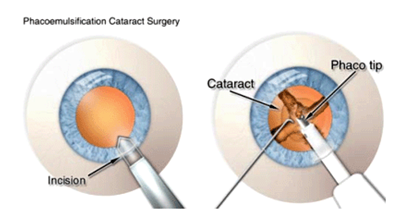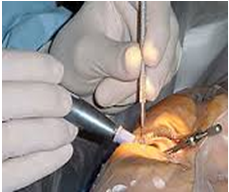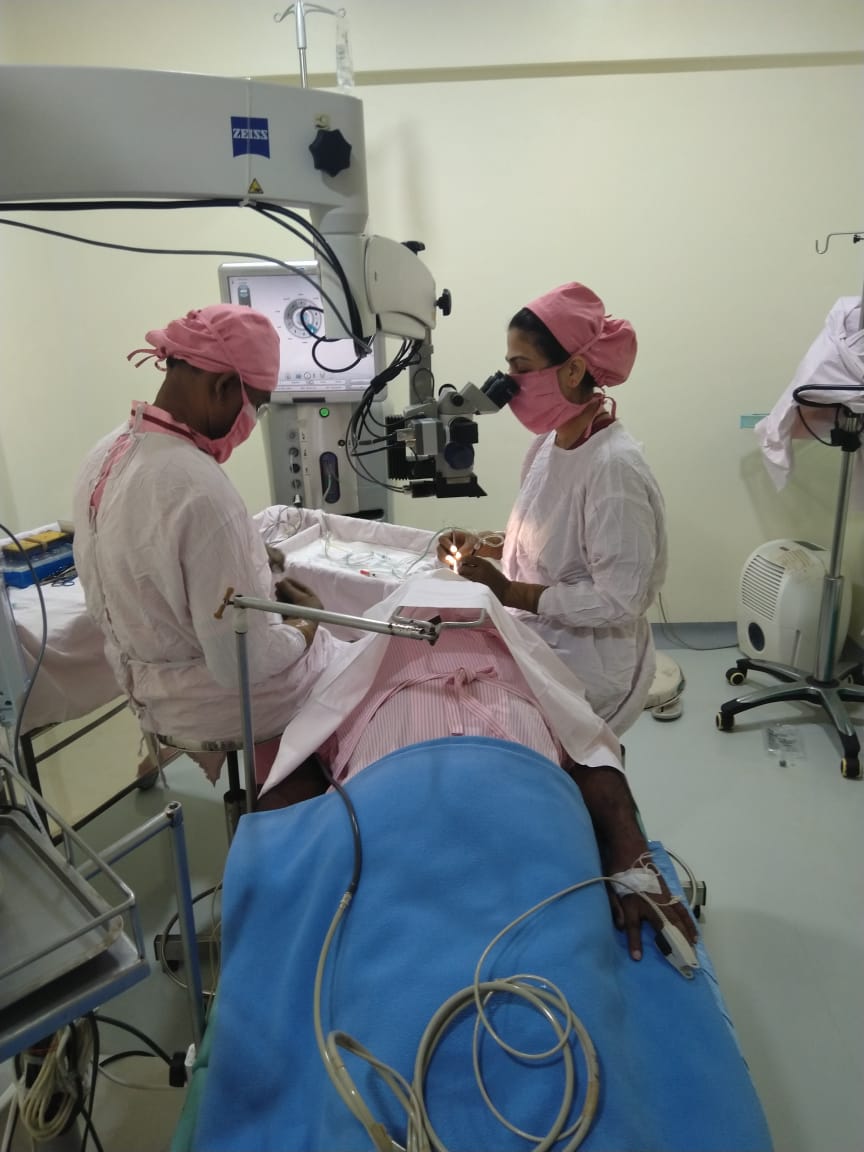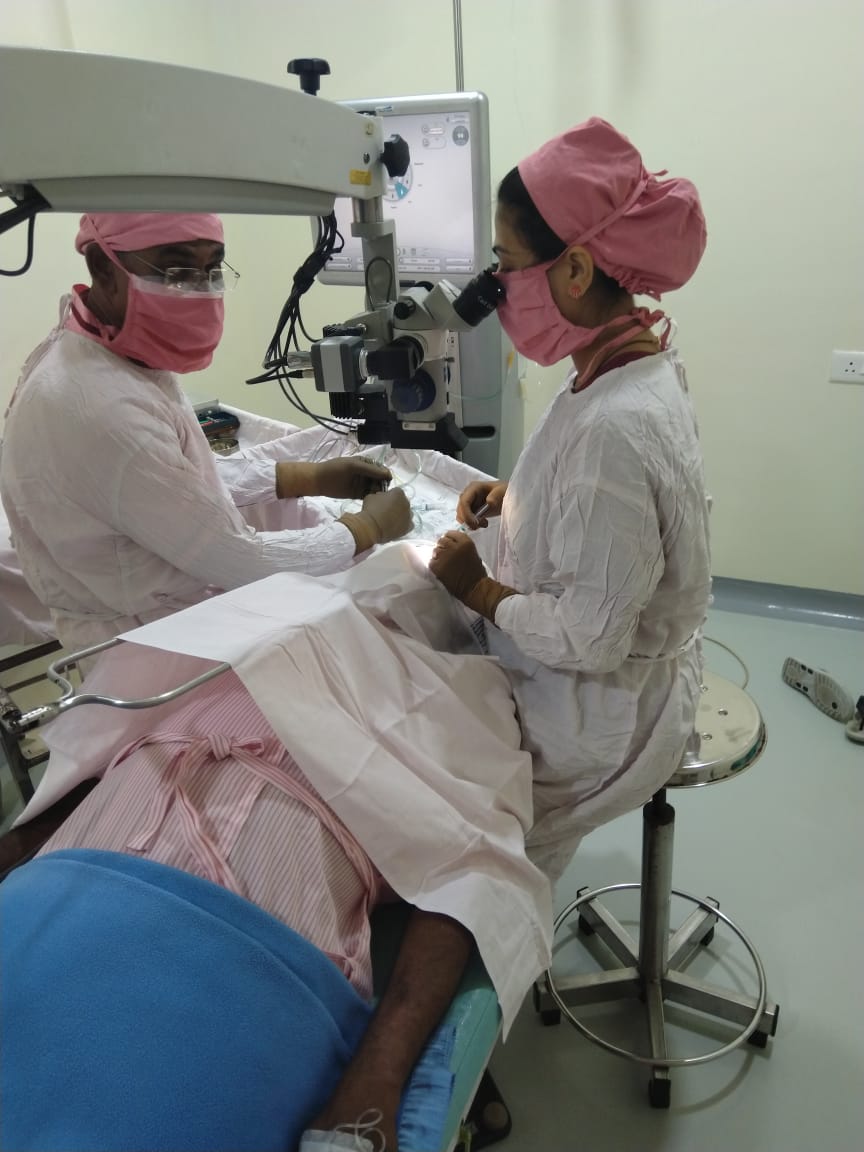Cataract surgery:
It is the most common eye surgery performed in elderly. In cataract surgery doctor perform surgery using phacoemulsification technique. In which surgeon break the cataract into small pieces and then it dissolves. Everything happens through small 2.8mm cut. And then foldable lens is implanted at the place of cataract. This restores your vision to 90-95 % This surgery is performed many times without injections with only numbing drops. It is stitchless, nearly painless surgery where most of the cases we do not use eye patch after operation. This makes recovery after surgery faster for patient. There are different types of intraocular lenses available which makes vision clearer without glasses. Your doctor will guide you about this before surgery.
Cataract is a clouding of the eye’s natural lens, which lies behind the iris and the pupil.Cataract is the most common cause of vision loss in people over the age 50 and is the principal cause of blindness in the world.
Symptoms:
- Vision gets cloudy, blurry, foggy, or filmy
- Nearsightedness (in older people)
- Changes in the way you see colour
- Problems driving at night (glare from headlights)
- Double Vision
- Not comfortable with eyeglasses





Treatment:
Surgery is the only effective treatment for Cataract. It is known as phacoemulsification surgery. The patient will be given a local anesthesia. No hospital stay is required
With advanced cataract techniques, tiny incision (2.2 or 2.8mm) incision is made on the side of the cornea. Through this incision the doctor inserts a tiny probe, using high frequency ultrasonic waves (phacoemulsification), the cataract is broken up & removed from the eye via the fine probe. Once the lens has been removed, an artificial lens is inserted through the small incision. This lens unfolds inside the eye into the correct position.
Cataract surgery is one of the safest and most commonly performed surgeries. At Aditi eye care, the surgery is performed on an outpatient basis and the cloudy lens is removed from the eye through microscopic surgical incisions using ultrasound power. Typically these incisions heal without the use of stitches. The focusing power of the lens is then restored by replacing it with a permanent lens implant.
At Aditi eye care we offer state-of-the-art cataract surgery for our patients. Your surgeon is highly trained in the safest and most advanced phacoemulsification cataract surgery for rapid visual recovery.
Here at Aditi eye care we give personalized plan of intraocular lenses according to need of each eye and patient requirement.
Premium IOL implants:
Standard monofocal lenses provide good distance vision but still require the use of reading glasses for near and intermediate work. To overcome that, options of Premium lenses likes multifocal and accommodating lenses are available. Multifocal lenses provide various degrees of distance and near vision depending on the design of the lens. Accommodating lenses helps to correct presbyopia by restoring some of the eyes ability to accommodate to near target.
Will I Need Glasses after Cataract Surgery?
In general, patients who choose to have monofocal lens implants will be dependent on glasses either some or most of the time in about 95% of cases for near vision. Patients who choose to have multifocal lens implants will only be dependent on glasses either some or most of the time in about 15% of cases.
In general, with multifocal IOLs, most tasks can be performed without spectacles. In some environments and with very fine print, reading glasses may be beneficial or necessary.



